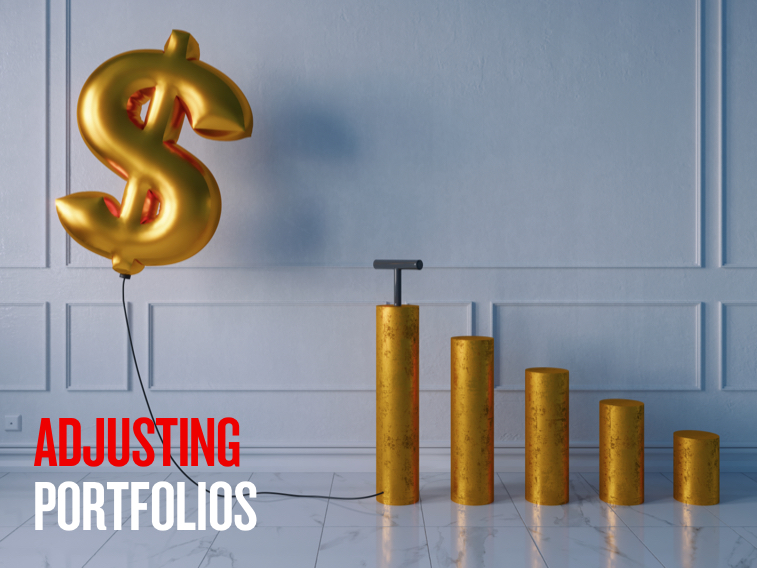We've captured the standout insights from the event series in an investor-ready eBook.


Report
With inflation at 40-year highs central banks are doing whatever it takes to bring it down.

Globally we have seen coordinated action to combat inflation with rising interest rates a common trait this year, and it’s likely to continue through early 2023.
This provides opportunity for investors to seek asset classes that do well during a hiking cycle.
1. Floating rate notes: As an income investment, Floating rate notes pay a coupon (interest payment) above a noted benchmark, like the Bank Bill Swap Rate (BBSW) – which is an independent reference rate highly correlated to the RBA cash rate.
For example, a floating note paying a coupon of BBSW+200 basis points (bps) means that the interest payment is 2% higher than the reference rate. If the RBA raises interest rates, it will be reflected in the interest payments your floating notes receive.
As the income of floating notes improve during rising interest rate cycles, it means the price of floating notes on the secondary market tend to be more stable relative to fixed bonds.
Floating rate notes are available in both investment grade bonds and hybrid securities.
2. FX investments: Currencies generally reflect the economic and inflationary outlook for the host country, and the variation between the economic drivers of two countries can create differentials in how markets perceive the value of those currencies. For instance, if the US Federal Reserve (Fed) has a higher cash rate relative to the RBA, it generally causes the US dollar to rise in value against the Australian dollar. Currently, we are seeing the Fed hike rates more aggressively than the RBA, which is why the Australian dollar has been falling this year. For investors who believe the Fed is likely to continue to raise rates more aggressively, they can consider diversifying their currency exposure into USD.
Movements in FX can be attractive, holding USD has been one of the few assets that has gone up this year.
Against the US dollar the Australian dollar has gone from US0.75c to US0.63 in the last 12 months, meaning if you had converted to US dollar a year ago your investment would be showing a 16% return compared to a 10% fall in the S&P/ASAX200 from the start of the year to the end of October.
3. Dual currency investments: A short term investment where investors seek a higher return to deposit rates in return for accepting foreign exchange risk.
Essentially, you create a currency-based trade by depositing funds with a bank in a base currency (AUD) and nominate an alternate currency like the USD or EUR. You nominate the duration of the trade and the exchange rate when it converts. If the bank accepts the trade, it will decide which currency it uses to complete the conversion, so you need to be prepared to receive AUD or the alternative currency at the end of the trade, which typically have a duration in days, weeks or months. You also need to have conviction in how the currencies will perform over the term of the investment.
There are generally 2 outcomes if the maturity price is:
1) Less than or equal to your Reference level, you will receive your original investment amount plus interest. No conversion is required.
2) Greater than your Reference Price, NAB will exchange your spot currency to the alternative currency at the reference level nominated plus the interest earned. In this case the investor will be selling their held currency at a level below the current market value.
4. Equity structured product: Equity Referenced Term Investments or “NERTIs” are short term investments, suitable for wholesale investors with a view on the direction of the share market and want to earn income from that conviction without physically holding shares.
In NERTIs, an investor selects an ASX listed equity of their choice, called the Reference Security, and a conversion price, called a Reference Price. Maturity of the investment can be set between 1 month and 364 days.
Where you set your Reference Price, relative to the current price of your chosen equity, will determine your Income Rate.
A higher Reference Price will result in a higher Income Rate. The income you earn is not impacted by any fluctuation in the chosen equity, however, repayment of your original investment amount is determined by the price of your selected equity at maturity.
There are generally 2 outcomes If the maturity price is:
Greater than your Reference Price, you will receive your original investment amount plus interest. Less than or equal to your Reference Price, you will receive your interest payments, but your original investment will be converted to shares in the selected equity at the agreed conversion price. In this case you will be converted into the equity at a price higher than current market value.
5. Cash is king: Before the interest rate hiking cycle that started this year, cash was an unattractive asset to hold. This is because when rates are near zero, other investment options like shares outperform as traditional fixed income instruments like term deposits and savings accounts offer minimal return.
However, rates are moving higher, and equity markets are volatile, making fixed income an increasingly attractive asset class to hold.
For the investor, one of the key benefits of cash is that it allows you to keep some ‘powder dry’ to take advantage of opportunities that arise when growth orientated markets start trending upwards again. View interest rate options we have available
Always consider the risk in any investment
All investments have risk, and typically the greater the risk you accept the more return you expect.
For instance, for bonds the risk is the company defaults on its payments. All bonds are rated by one or more of the international ratings agencies, and it provides a good guide to the risk you are accepting. On the other hand, Hybrids can have unique terms and conditions, and may have triggers to convert to equity.
For currency trades you need to consider the global environment and how the currencies you trade in may be affected by local, regional or wider events. If a currency moves opposite to your expectations, you may be putting your capital at risk. It is the same with derivative investments, if the trade moves opposite to your expectations, you may receive your interest payments but lose part or all your initial invested capital.
Understanding risk is vital to being a confident and successful investor. Our investment specialists are here to provide the knowledge and tools you need to make informed decisions and pursue your wealth goals and stay invested throughout the investment cycle.
The information contained in this article is intended to be of a general nature only. It has been prepared without taking into account any person’s objectives, financial situation or needs. NAB does not guarantee the accuracy or reliability of any information in this article which is stated or provided by a third party. Before acting on this information, NAB recommends that you consider whether it is appropriate for your circumstances. NAB recommends that you seek independent legal, property, financial and taxation advice before acting on any information in this article. You may be exposed to investment risk, including loss of income and principal invested.
You should consider the relevant Product Disclosure Statement (PDS), Information Memorandum (IM) or other disclosure document and Financial Services Guide (available on request) before deciding whether to acquire, or to continue to hold, any of our products.
All information in this article is intended to be accessed by the following persons ‘Wholesale Clients’ as defined by the Corporations Act. This article should not be construed as a recommendation to acquire or dispose of any investments.
© National Australia Bank Limited. ABN 12 004 044 937 AFSL and Australian Credit Licence 230686.